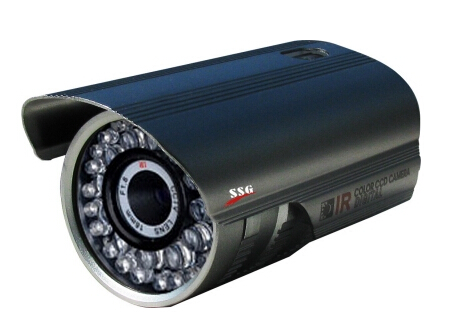[ Huaqiang Security Network News ] 
After infrared technology was discovered by British astronomer Herschel in 1800, more and more scientists are studying how to apply it in various occasions. The application of active infrared camera technology in security monitoring has been fast for nearly two decades. The development technology is relatively mature. While the infrared camera has grown stronger and faster, the product types are constantly diversifying and the application fields are further expanding. There are several types that can be summarized:

Common Infrared Camera Types 1. Halogen infrared cameras that have been eliminated: Halogen lamps have very high luminous power. Of course, power consumption and heat generation will be relatively large, and the cost is relatively high. Its fatal disadvantage is that it is bulky and has insufficient heat dissipation. The life is very short, generally within a thousand hours, and the red storm is particularly serious, so it is not suitable for civil night vision monitoring. Due to the high power and the light-to-heat conversion of the filter, the halogen infrared camera has a particularly hot heating problem, high maintenance cost and short life.
Common infrared camera type 2, LED infrared camera: LED infrared light is composed of a certain number of infrared light-emitting diodes. The infrared emitting diode is made of a material with high infrared radiation efficiency (commonly used GaAs GaAs), and a forward bias voltage is applied to the PN junction to inject infrared light. The spectral power distribution is center wavelength 830~950nm, half-peak bandwidth. About 40nm, it is a narrow band distribution that is sensible for CCD cameras. LED infrared camera is generally suitable for short distances of 10~100 meters, and has the highest market share, but there are problems of uneven illumination. It is mainly suitable for short distances such as corridors, halls, warehouses, etc., indoor and building peripherals, community perimeters, roads, etc. monitor.
Common Infrared Camera Type III. LED Array Infrared Camera: The core of the array type infrared lamp is LED array. Compared with the traditional LED, it has the following advantages: 1. High brightness, the output of a single LEDArray is about 1W~30W. The brightness is about tens of times that of the conventional single LED output of 5~15mW, so the range is far; 2, the electro-optical conversion efficiency is high, the electro-optical conversion efficiency of the ordinary infrared LED is only about 10%, and the LEDArray electro-optical conversion efficiency is improved. 25% or so; 3, small size, LEDArray technology will be highly integrated with the light-emitting unit, which is much smaller than the ordinary LED infrared light product under the same brightness index; 4, long life, LEDArray life is 50,000h, than ordinary LED life Much higher. The array type infrared lamp product has an obvious deficiency, that is, "eccentricity phenomenon". Since the illumination angle can reach 120-180 degrees, it is necessary to reduce the light supply angle through the lens to match the camera lens, so that inevitably a lot of light deviates from the center of the lens, resulting in poor light transmission efficiency. The LED array infrared camera is basically the same as the LED infrared camera. It is more suitable for medium and short-distance monitoring applications such as halls, warehouses, etc., indoor and building peripherals, community perimeters, and roads.
Common infrared camera type 4, dot matrix infrared camera uses a dot matrix infrared light source. The third-generation infrared illuminating components used in dot matrix infrared lamps are based on the second generation of array-based infrared lamps (LED--Array), so it is also called the second-generation LED-Array. Compared with the first generation, the second-generation LED-Array has the advantages of small size, good heat dissipation, slow decay, long life and a rated life of 50,000 hours. Dot matrix infrared lamps are also called high-power array infrared. The biggest difference from low-power array infrared is higher brightness and lower cost. Through independent lenses, the angle of light distribution can be adjusted according to the needs of use. The first generation of "flashlight effect" problem and the second generation of "eccentricity phenomenon".
Common Infrared Camera Types 5. Laser Infrared Cameras: Laser infrared cameras can reach a distance of up to 300~5000 meters. Due to energy concentration, the angle is small and close, and the cost is still high. It is more suitable for monitoring in forest fire prevention, oil field, railway, water conservancy, scenic area, military, aquaculture, port and Ping An market. With the further reduction of cost, it has been applied to many areas requiring night vision monitoring including community. . Therefore, the infrared camera needs to determine the camera type according to the specific use environment, especially the night environment.
JIANFA SANITARY WARE INDUSTRY CO., LTD , https://www.jfsanitary.com